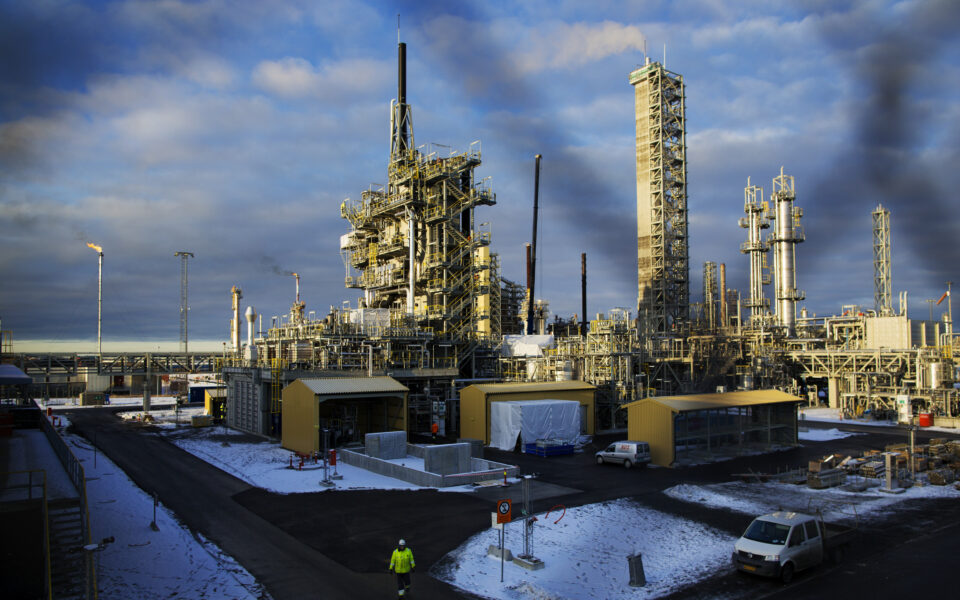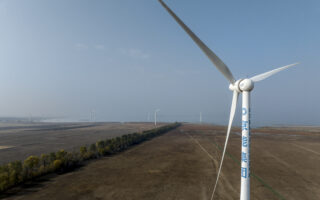It’s not just willow: Oil and gas projects are back in a big way

When the Biden administration greenlighted the $8 billion Willow oil project on Alaska’s North Slope last month, many decried the move as a betrayal of the United States’ pledge to move away from fossil fuels in the fight against climate change.
But an analysis of global data shows that Willow represents a small fraction of hundreds of new oil and gas extraction projects approved in the past year across the world, including many more in the United States. And in the coming months, dozens of additional projects are expected to be approved.
The data reflect a surging fossil fuel industry that has rebounded to prepandemic levels of growth. Even though the past few years have seen many countries institute policies that encourage renewable energy, demand for fossil fuels remains high. Russia’s invasion of Ukraine drove up oil prices, contributing to record profits for fossil fuel companies, as governments scrambled to secure their energy supplies, sending prices soaring.
“It’s a full bounce-back,” said Espen Erlingsen, a partner at Rystad Energy, the research firm that provided the data. “The future of this growth depends on policy. If the world wants to limit warming, it will have to limit demand for oil and gas because this industry can deliver this kind of volume for many more decades.”
Much of the growth is taking place in traditional oil- and gas-producing nations such as the United States, Saudi Arabia and Norway. Gas, in particular, is booming. Qatar is planning to unveil the world’s biggest gas production facility in 2025.
In the United States, the fracking of shale rock beds for gas is resurgent, accounting for many times the level of investment and extraction as a project like Willow.
While gas causes fewer greenhouse gas emissions than oil does, the expansion of gas exploitation is incompatible with commitments that nations have made to limit emissions, according to the Intergovernmental Panel on Climate Change, the preeminent grouping of scientists who study global warming. The IPCC says that fossil fuel production must start declining sharply now to avoid the most catastrophic effects of climate change.
Vast new oil fields have also been approved for exploitation by Western multinational companies in Guyana, Brazil and Uganda, among others. Some developing countries have argued that income from fossil fuel – essential to the prosperity of the industrialized world – is also their right, and that climate change mitigation is largely the responsibility of wealthy nations.
Ghana’s president, Nana Akufo-Addo, made that argument clear to Kamala Harris, the visiting US vice president, last week. Fossil fuels were a resource “which my government is seeking to use as the basis to transform its economy,” he said, standing by Harris’ side. Their extraction would help his country wean itself from reliance on foreign aid, he said.
Western countries have pooled loans to major coal-dependent countries such as South Africa, Vietnam and Indonesia to help them develop renewable alternatives. But while coal development has been falling across the world (with the notable exceptions of China and India), the economies of many countries, both rich and poor, remain reliant on fossil fuel. Coal is a particularly dirty fossil fuel, and burning it remains a major producer of the greenhouse gas emissions that are warming the world.
The oil and gas industry’s outlook was decidedly different as the pandemic’s ravaging effects on the global economy were becoming clear in 2020. After many years of steady growth, companies revised growth downward and postponed or canceled projects.
The cost of renewable energy sources like wind and solar were also rapidly declining to levels competitive with fossil fuels. Progressive climate policies in Europe and, eventually, the United States added greater uncertainty about fossil fuels’ role in everything from power grids to transportation.
But as the global economy came roaring back, so did demand for oil and gas. Amid the record profits that fossil fuel companies made last year, some also extended timelines for production further into the future, in essence reneging on pledges to transition their businesses, however slowly, toward renewable energy.
BP recently revised its plan to cut production by 40% by 2030, setting a new target of 25%. The company’s stock price surged on the news. Shell said it would leave its renewable energy spending at 2022 levels rather than continue the company’s expansion in wind, solar and biofuels.
Less subject to public scrutiny are the national oil companies of countries such as Norway, Saudi Arabia and the United Arab Emirates, which made profits even greater than those of private multinationals.
Oil and gas projects either approved in 2022 or slated to be approved between 2023 and 2025 could cause 70 gigatons of carbon dioxide emissions over the course of their life spans, according to an analysis by Oil Change International, an advocacy group. That amount is equivalent to more than 30 times the United States’ total carbon dioxide emissions in 2021.
Trillions of dollars are now being invested in fossil fuel infrastructure, said Michael Lazarus, a scientist and research director at the Stockholm Environment Institute, a scientific research group monitoring fossil fuel projects.
“A lot of this build-out is poised to come on board toward the end of this decade, when we really need to be on a declining path away from fossil fuels,” Lazarus said. “Oil and gas companies are essentially banking on demand remaining as high then as it is now.”
Without policy that directly seeks to limit both production of fossil fuels as well as demand for them, he said, there is a higher chance that the companies’ gamble will pay off.
Even in the United States, where the Biden administration’s historic climate legislation from last year is unleashing hundreds of billions of dollars into the renewable energy industry, the production and demand of both oil and gas are forecast to grow.
“It’s not like the US is one of many actors; it has become the world’s largest oil and gas producer,” Lazarus said. “All signs are that Washington is intent on retaining that position. Is that showing climate leadership? There is a fundamental contradiction there that has to be pointed out.”
This article originally appeared in The New York Times.






